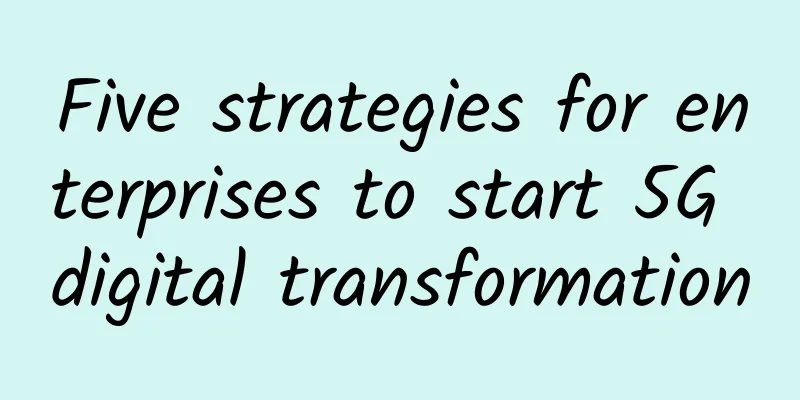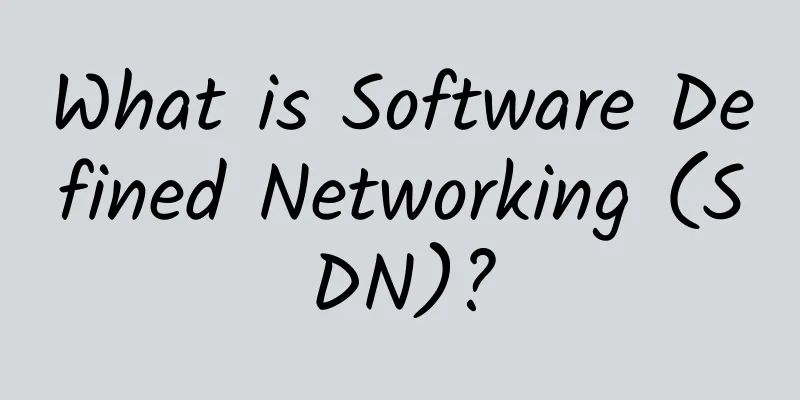Five strategies for enterprises to start 5G digital transformation

|
Of course, 5G has been in the spotlight in 2020. From Huawei’s withdrawal from UK infrastructure to Ericsson leading the UK’s nationwide rollout, it’s certainly been a topic of discussion from a political, economic and consumer perspective. But how can businesses realise the potential of 5G? We read a lot about how 5G will change our lives, from faster home working broadband speeds to high-quality gaming, but when it comes to implementing a 5G strategy to achieve tangible business results, many executives could be forgiven for not knowing where to start. In this post, I’ll explain five strategies enterprises can adopt to kick-start their 5G digital transformation so they can reap the rewards of greater agility and expanded customer reach in 2021 and beyond. Back to BasicsBefore we explore the five strategies, it’s important to note that wireless WAN applications that were already strong using 4G will be even better with 5G, and applications that didn’t work with 4G will now be feasible with 5G. It’s also important to note that 5G is much more than just one spectrum. In fact, there are three frequency bands to be aware of in 5G: 4G LTE, Sub-6 GHz, and mmWave. Each has its own characteristics and pros and cons. Spectrum bands with high propagation have lower performance characteristics, while spectrum bands with low propagation have higher performance characteristics. It’s important to understand the key points of each before you begin your 5G rollout. For example, business leaders should meet with the strategic department of the enterprise and hold meetings with each department to understand how the market and customers will change in 2 to 5 years. From here, business leaders can begin to understand how technology can take advantage of these changes and how any technology gaps may prevent them from seizing new opportunities. What role can wireless WAN play in their plans? What steps can they take now to prepare? After this exercise is completed and these questions are answered, business leaders can develop a technology roadmap that is signed off by different stakeholder groups (such as finance, procurement, and marketing) who can help turn these plans into actual projects. With these basics in mind, we can explore five strategies that companies might adopt to drive 5G innovation… 1. Failover strategyA wireless failover strategy is critical for organizations that rely on external connections to run their business, such as cloud applications, POS systems, and employee systems, which all rely on always-on WAN connectivity. Typically, dual wired links share the same trench or terminate at the same local node. With wireless connectivity, construction accidents and shared channels can be minimized. Fundamentally, failover strategies create diverse paths to high availability, provide a solid foundation for WAN transformation, and are easy to deploy from day one. 2. Bandwidth increase strategyThis is an excellent, highly flexible option for sites that require diverse failover paths and need more bandwidth. For organizations that use both wired and wireless connections, wireless links can be established instantly. Each link can then be assigned to a traffic type, or they can be effectively bonded together with advanced SD-WAN solutions. 3. Main wireless strategiesA primarily wireless strategy is a strong use case for enterprises that need the full flexibility of a wireless WAN and the performance of 5G. Ideal users are organizations that are expanding, frequently changing their locations, have poor wired options, or have a large national footprint. Recent unexpected events, such as the COVID-19 pandemic, have shown the importance of this flexible approach for things like pop-up testing centers. A great example to keep in mind is, for example, a retail store at an airport that wants to offer a virtual dressing room application to its customers. It’s unlikely that the airport itself can offer a network service that can support augmented reality. However, with 5G, the retailer can bring its own high-performance network to bear. This is a classic example of how a primary wireless strategy can really work. 4. IoT StrategyAs technologies such as the cloud, IoT and AI converge, and 5G becomes increasingly available, the greater opportunity for digital transformation will become apparent to many businesses. Retail, manufacturing and public services are just three examples of sectors that need a coherent and forward-thinking connectivity strategy to drive them forward. Take manufacturing, for example. In harsh environments such as chemical plants, organizations are often unable to run certain types of cables because any physical interaction could affect the materials being produced. Many manufacturing plants are also in remote and rural areas. At the same time, more and more tasks on the shop floor are being performed by robots. Of course, the use of robots also needs to be wireless, and Wi-Fi will not be interrupted by potential transmission interference. In this regard, 5G is a good choice - it is the right wireless solution, which can also be combined with mobile edge computing solutions. 5. Mobile StrategyA flexible 5G mobile strategy is well suited for environments with rich mobile applications and provides expanded services to customers and users. If we think about organizations that rely on mobility, such as emergency services, 5G will have a transformative impact. For example, police cars today are embedded with a plethora of technology, such as cameras, to better record incidents for both officers and the public. But currently, video of any crime or incident needs to be uploaded back to the police station over a wireless network. With 5G, the vehicle itself will be able to upload video in real time, which will ultimately improve safety, accountability and community relations. Here are five winning strategies that UK businesses can easily implement to ensure a successful and seamless digital transformation. “5G” doesn’t have to be out of reach or confusing. By developing a clear roadmap for your business goals and the technologies required to achieve them, this will give you a solid foundation that will enable you to leverage the most effective 5G deployment strategy. |
<<: 6G brings an innovative revolution, but also hides many crises and challenges
Recommend
5G applications with over 100 million users have crossed the starting line
The development of 5G networks is in full swing. ...
Network | Why is the speed of 4G getting slower and slower?
Have you noticed that when you upgrade from 2G or...
China's 5G smartphone shipments reached 108 million units, but how many people use 5G?
my country has always been the world's larges...
Riverbed Launches Two New Visibility Solutions to Enable 360-degree View of Enterprise IT
[51CTO.com original article] Riverbed recently an...
How does network monitoring work?
Network monitoring complements network management...
In 2016, SDN is accelerating in the enterprise market, while the carrier market is still in the process of warming up.
[Original article from 51CTO.com] With the advent...
Interviewer: Can you tell me about the release process of WeChat Mini Programs?
[[431428]] This article is reprinted from the WeC...
What is a Bluetooth gateway and how to use it?
What is a Bluetooth Gateway? A Bluetooth gateway ...
What are the excellent designs worth learning in NS?
I used to be a student, and now when I think back...
The future of Internet streaming: Ultra-high-definition displays
As we stand on the precipice of a new era in digi...
What is CDN? Is using CDN definitely faster than not using it?
For developers, the term CDN is both familiar an...
Ten reasons why traditional routers are abandoned (six, seven, eight)
Over the years, we've dutifully upgraded our ...
The first batch of commercial 5G networks may not even be able to make phone calls?
01.Everyone is paying attention to the 5G Interne...
Detailed explanation of SSL protocol communication process and symmetric encryption and asymmetric encryption in HTTPS
[[276508]] Symmetric encryption The so-called sym...
Faced with slowing growth, operators need to change their roles
The past year was the "golden period" f...
![[Black Friday] spinservers: Dallas/San Jose dedicated servers starting from $59/month, E3-1280v5/32G/1TB NVMe/10Gbps bandwidth](/upload/images/67cac01c72246.webp)








